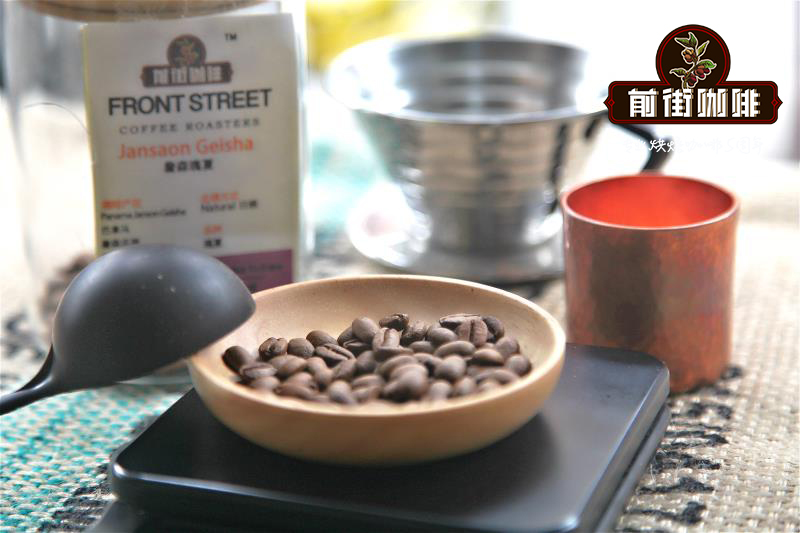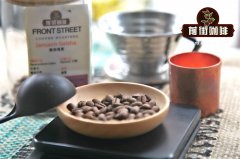Coffee roasting A physical change in the roasting stage of coffee at roasting temperature and time.

Professional coffee knowledge exchange more coffee bean information please follow the coffee workshop (Wechat official account cafe_style)
The importance of physical structure
The layered structure of coffee beans has a great influence on the flavor we want. Without a specific physical structure, the chemical reactions essential to flavor and aroma will not take place.
Grinding raw beans into powder and placing them at the same temperature as when baking will not produce the flavor compounds we need. Intact coffee beans are necessary to produce chemical reactions. The complete structure can control and reflect the baking environment on the right premise and can react with each other in the right order.
A dramatic change in baking
Coffee beans are dense and compact seeds, but once they start roasting, they change their original state. Let's take a look at what happens when roasting:
A change in color
Perhaps the most obvious change during baking is the color. Before baking, fresh raw coffee beans appear blue-green and then turn brown due to melanoid production. These are polymers formed when sugars and amino acids combine under heating. In the baking process, part of the silver skin will also fall off, silver skin is the closest to the coffee bean's outer paper material.
Bean bakers and consumers will use color as the standard to define the quality of coffee beans and baking results.
Change of moisture content and quality
The moisture content of raw coffee beans after drying process is about 10-12%, but after baking, the moisture content will be reduced to about 2.5%. In addition to the water that already exists in raw beans, additional water is produced through chemical reactions, but this evaporates during baking.
The loss of water and the conversion of some dry substances into gas are the reasons for the decrease of the overall quality of raw beans after baking. On average, coffee beans lose 12-20% of their weight before and after baking. Bakers often record the weightlessness ratio to determine which batches of raw beans may require additional monitoring in terms of quality.
Different baking curves will affect the time of dehydration, baking at different time points, the change of water activity may represent the difference of chemical reaction, which may affect the final baking curve.
Important Notice :
前街咖啡 FrontStreet Coffee has moved to new addredd:
FrontStreet Coffee Address: 315,Donghua East Road,GuangZhou
Tel:020 38364473
- Prev

Nicaraguan Coffee Variety in Madaguelba Coffee producing area
For more information on coffee beans, please follow the Coffee Workshop (Wechat official account cafe_style) Central America is a land bridge connecting North and South America. There are seven countries, namely, Belize, Costa Rica, El Salvador, Guatemala, Honduras, Nicaragua and Panama. Coffee is produced in seven Central American countries, including Guatemala, Costa Rica and Acer.
- Next

Coffee roasting physical changes of coffee roasting temperature and time during coffee roasting
For more information on coffee beans, please follow the coffee workshop (official Wechat account cafe_style). Roasting converts coffee beans from raw beans to ripe beans with rich aroma and flavor, but do you know what happened during the roasting process? When we bake beans, they are mainly divided into physical and chemical changes, volume and pores, and the cell wall strength of coffee beans ranks at the top of the plant kingdom.
Related
- Beginners will see the "Coffee pull flower" guide!
- What is the difference between ice blog purified milk and ordinary milk coffee?
- Why is the Philippines the largest producer of crops in Liberia?
- For coffee extraction, should the fine powder be retained?
- How does extracted espresso fill pressed powder? How much strength does it take to press the powder?
- How to make jasmine cold extract coffee? Is the jasmine + latte good?
- Will this little toy really make the coffee taste better? How does Lily Drip affect coffee extraction?
- Will the action of slapping the filter cup also affect coffee extraction?
- What's the difference between powder-to-water ratio and powder-to-liquid ratio?
- What is the Ethiopian local species? What does it have to do with Heirloom native species?

